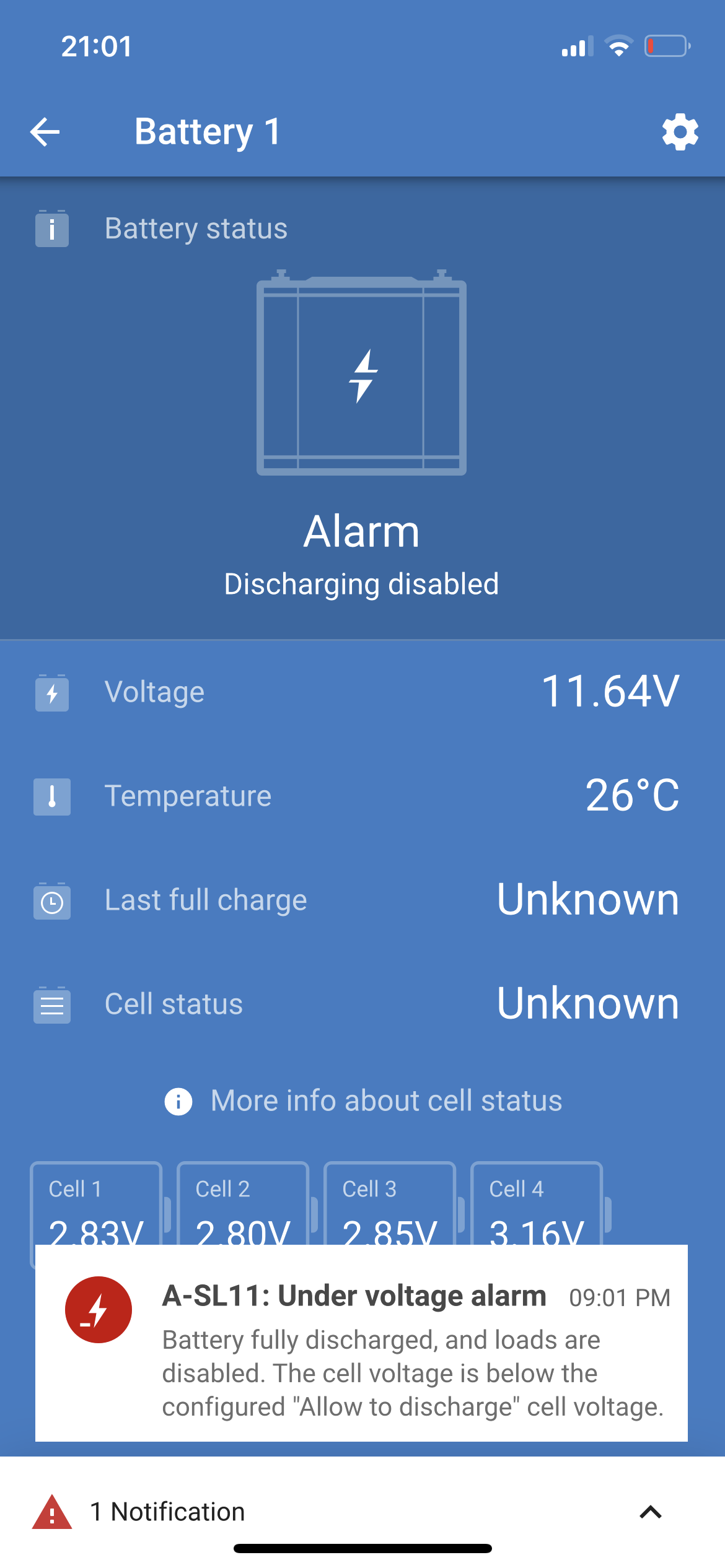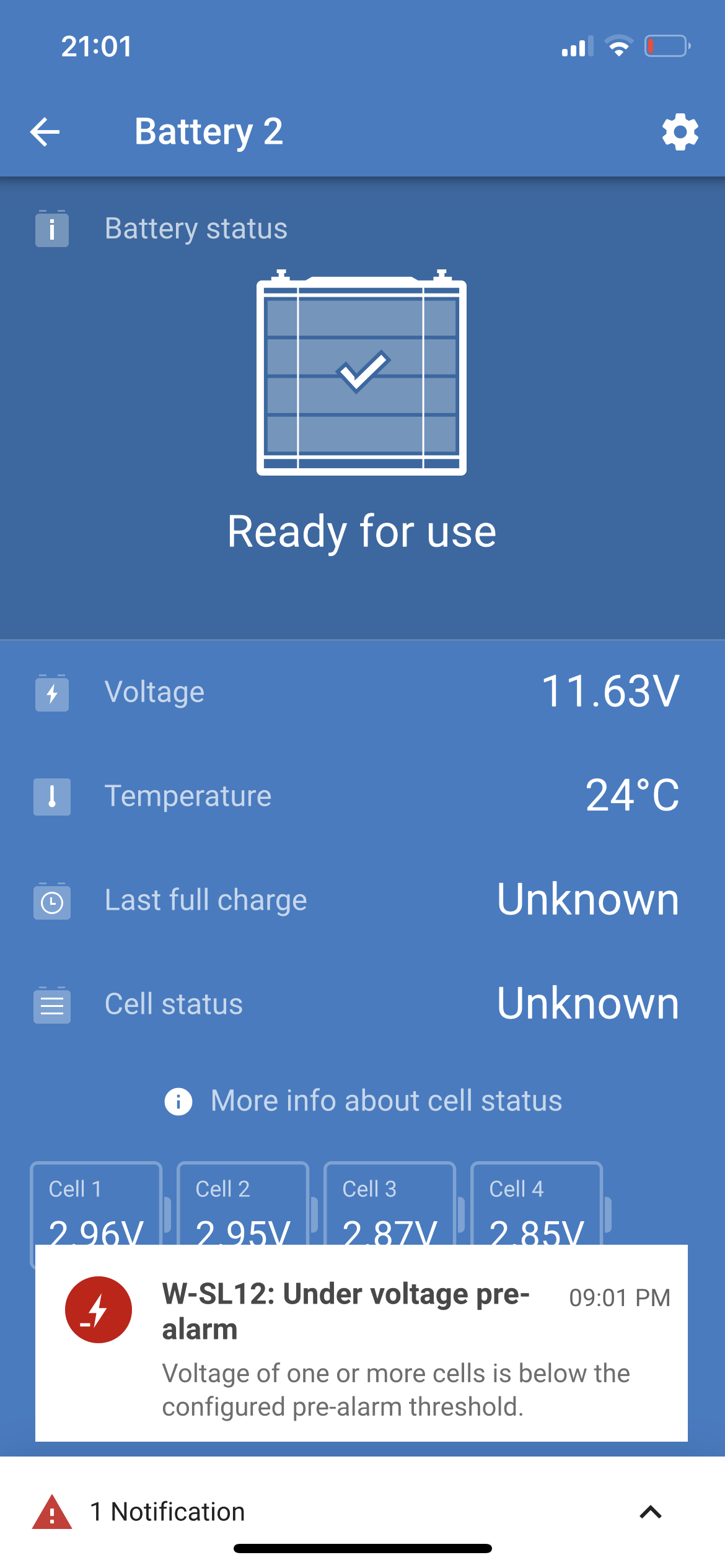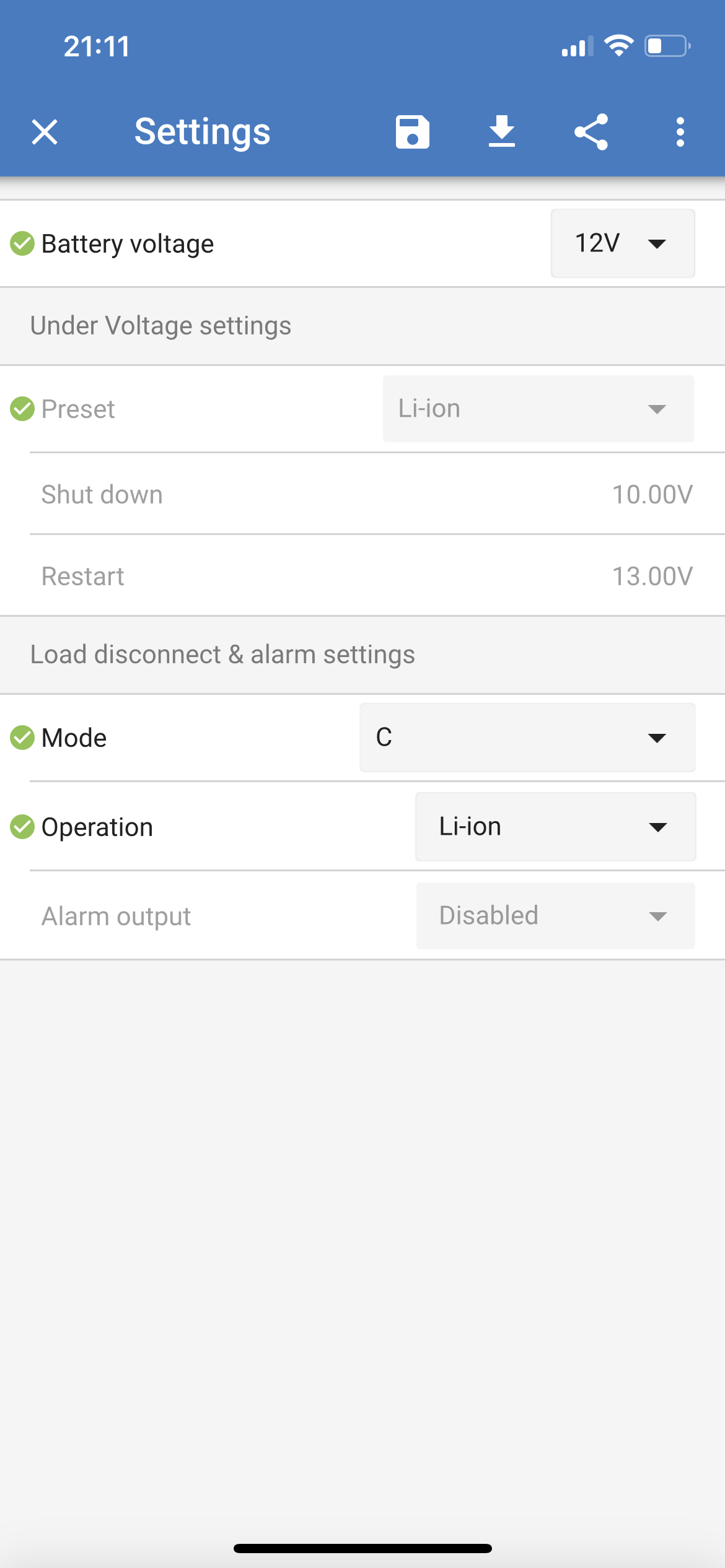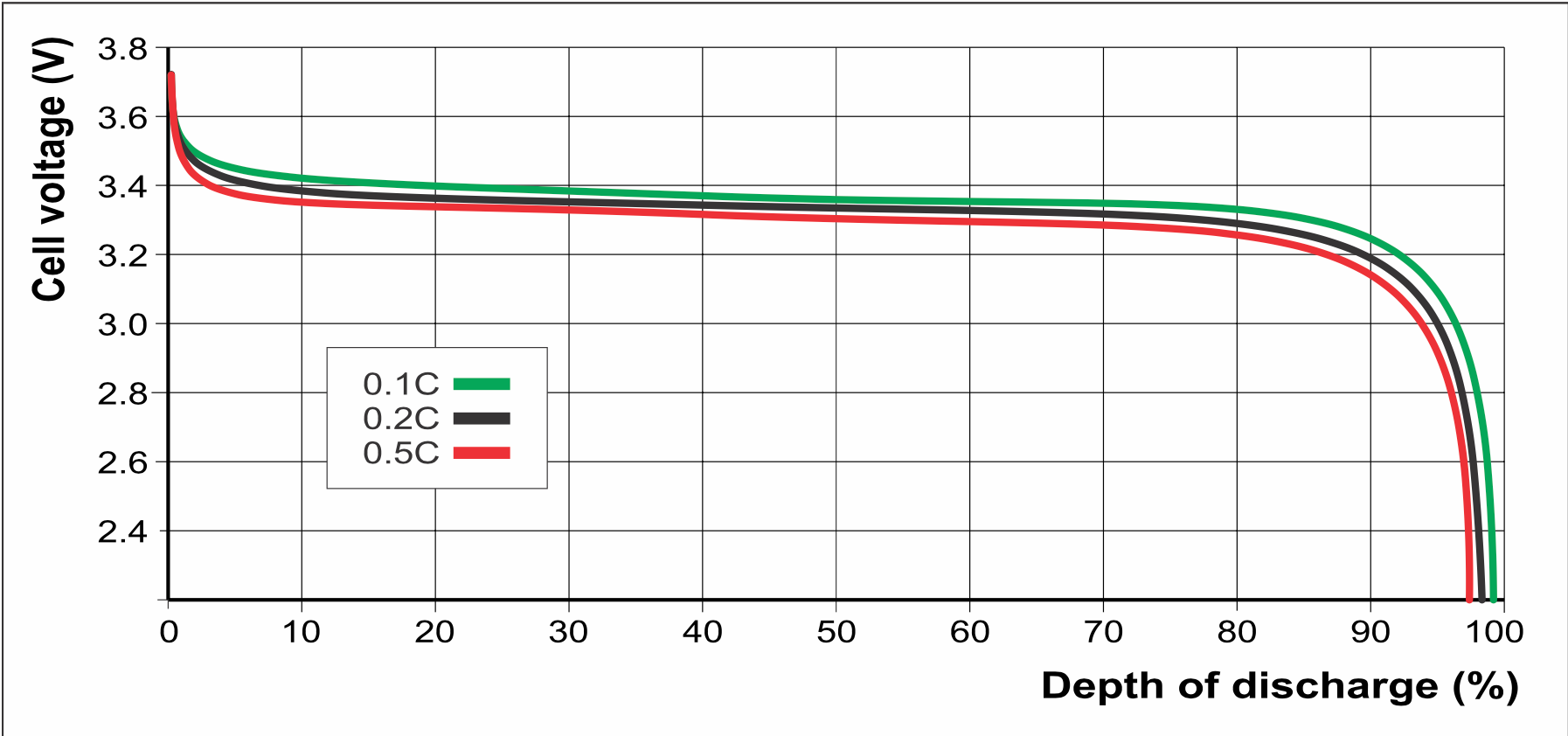Hi all,
i have charged to 100% my bank of 2 x 330ah lithium batteries and moderately used them for 3 days, but when coming back home on the 4th day I found my system shot down for low voltage.
I find this really confusing, a 50% discharge should be once I have used 330ah out of a 660ah bank? Non? I have actually used 28% and the system stopped.
My Lynx BMS was showing the 73% discharge and only 206 amps used since the full charge. So for me I miss some 100 amps of real life use, which is 23% to go till 50% discharge.
any help with this question?
I may get it wrong or have some settings to tweak, so any help is very welcome



my Battery Protect is set as Lithium by default but it seems that the shut down was initiated by the batteries themselves, before the Battery Protect kicks in, see below


